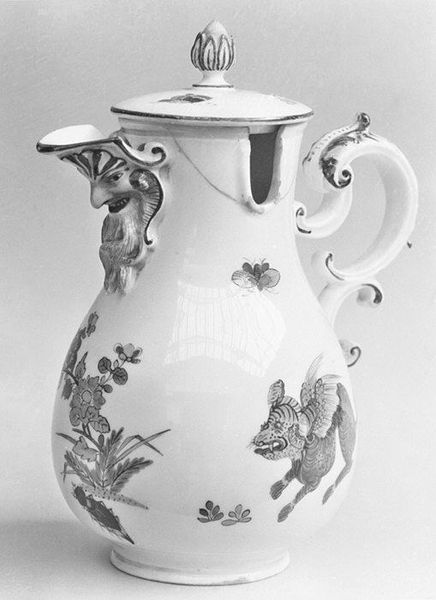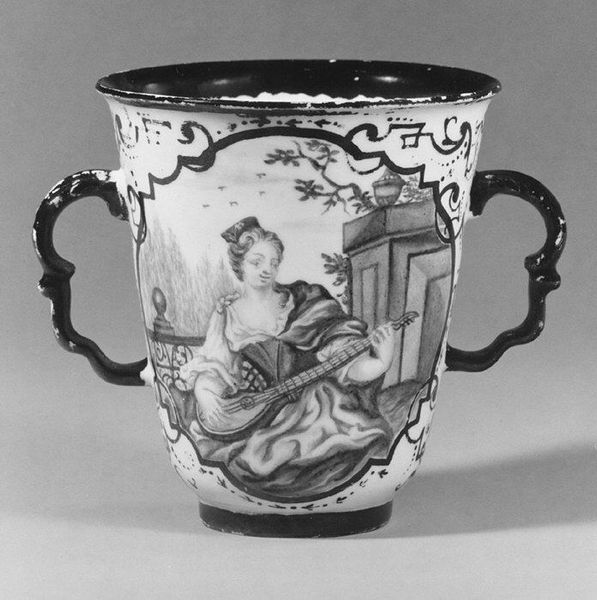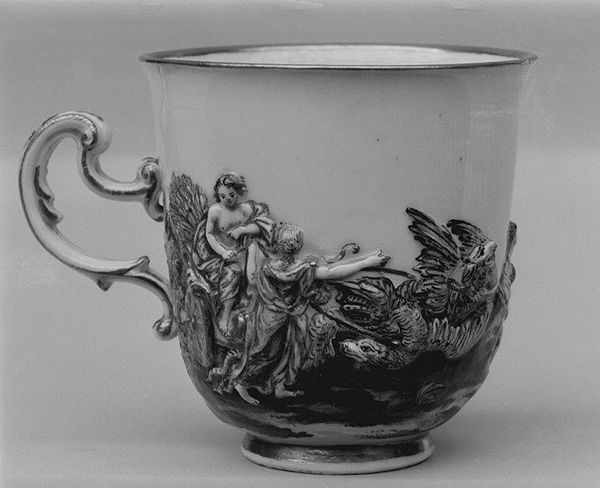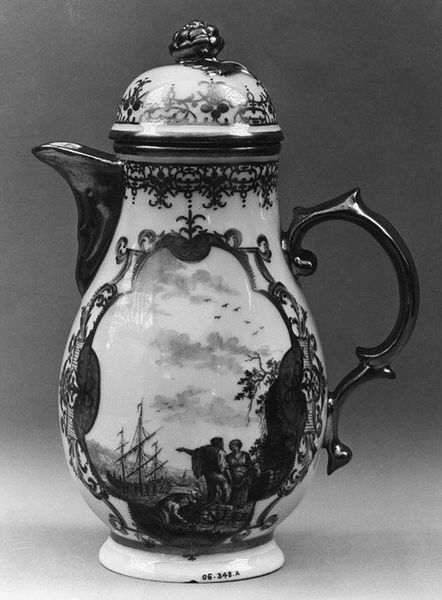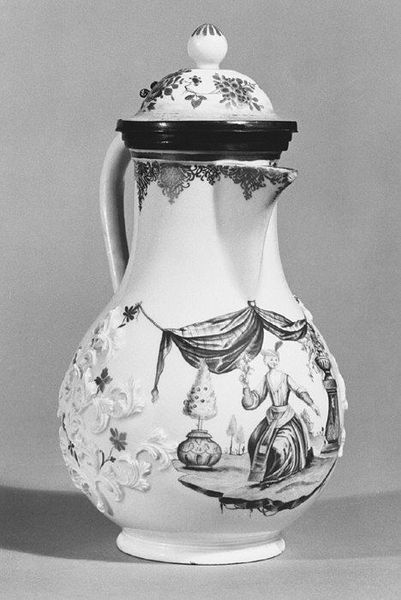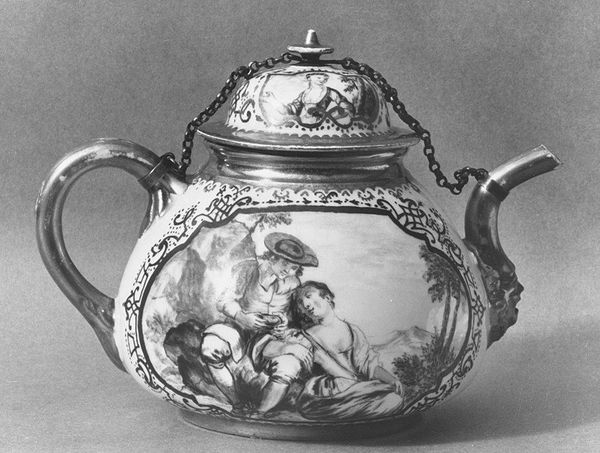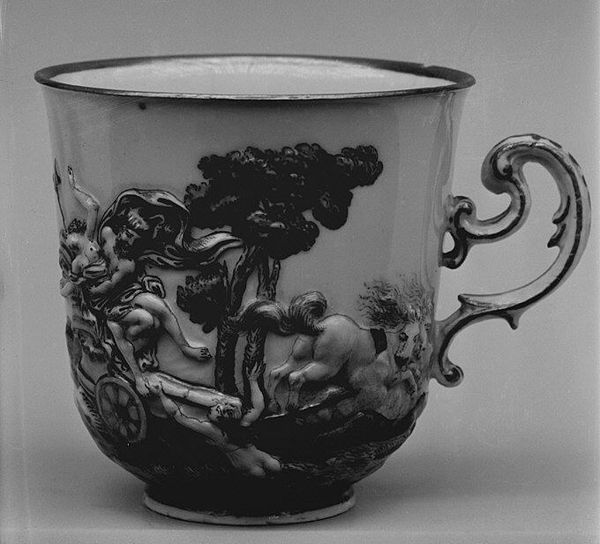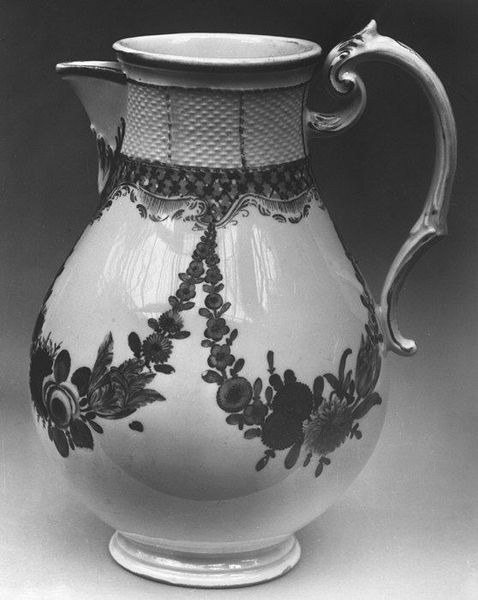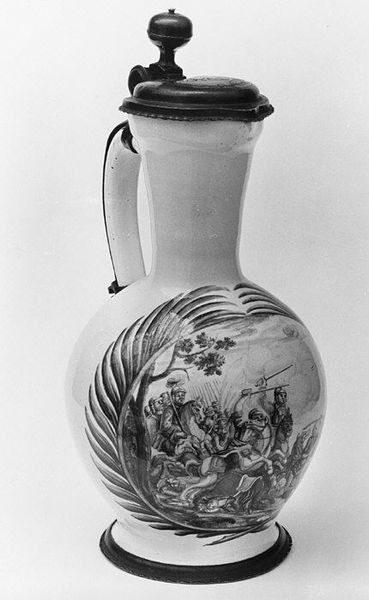
Creamer with cover (part of a service) 1755 - 1765
0:00
0:00
relief, ceramic, porcelain, sculpture
#
relief
#
ceramic
#
porcelain
#
figuration
#
sculpture
#
history-painting
#
decorative-art
#
rococo
Dimensions: Height: 6 1/2 in. (16.5 cm)
Copyright: Public Domain
Editor: So, this is a creamer with cover, part of a set, made by the Doccia Porcelain Manufactory between 1755 and 1765. It's porcelain, decorated with relief sculpture. I'm struck by how the whole surface seems to be mobilized, covered in figures and dramatic action. What strikes you about this piece? Curator: Immediately, I’m drawn to consider porcelain production in the mid-18th century. Think about the process of making something like this: the kaolin clay, the sourcing of it, the skilled labor required to mold and fire such a delicate form, and the added labor to apply the sculptural reliefs. This isn't just a functional object; it’s a display of manufacturing power and wealth, right? Editor: Absolutely. It feels like it’s trying to elevate itself beyond just being a container for cream. Curator: Exactly. The imagery is intriguing as well. The sculptural reliefs—historical paintings perhaps? Consider how they are appropriating and miniaturizing high art. It brings painting's intellectual prestige into the domestic sphere through decorative labor. What did owning such an item signify? Who was consuming from this? Editor: So it's less about the scene itself and more about the act of owning something that displays refined craftsmanship and historical knowledge. Like a status symbol expressed through material and labour. Curator: Precisely. Porcelain like this highlights a changing social dynamic. These weren’t unique, handcrafted artworks; these were commodities, manufactured for consumption within a rising class. Editor: I see your point. It changes how I view what's happening in the actual scene depicted. The object itself tells a story about its production and social context. Curator: Yes, by looking at the means of production, and the materials and their deployment, we reveal much more than just aesthetics. We see power, labor, and consumption intertwined. Editor: I never thought of porcelain this way before! Seeing it as a product of complex social and economic forces opens up a whole new understanding. Curator: Indeed, it is by unpacking those processes that objects become compelling historical texts.
Comments
No comments
Be the first to comment and join the conversation on the ultimate creative platform.

